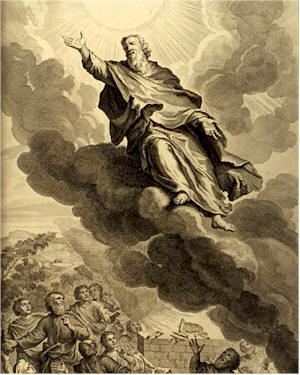 | ||
Similar Testaments of the Twelve P, Ascension of Isaiah, Psalms of Solomon, Letter of Aristeas, Testament of Abraham | ||
The Assumption of Moses (otherwise called the Testament of Moses) is a Jewish apocryphal pseudepigraphical work. It is known from a single sixth-century incomplete manuscript in Latin that was discovered by Antonio Ceriani in the Biblioteca Ambrosiana in Milan in the mid-nineteenth century and published by him in 1861.
Contents
- Assumption of moses
- Identification
- Relation with the Epistle of Jude
- Content
- Date original language and themes
- References
Assumption of moses
Identification
The two titles of this manuscript are due to different identifications with lost texts. The Stichometry of Nicephorus and some other ancient lists refer to both a Testament of Moses and an Assumption of Moses, apparently as separate texts.
Relation with the Epistle of Jude
Some ancient writers, including Gelasius (verse 2,21,17) and Origen (De principiis, III,2,1), cite the Assumption of Moses with reference to the dispute over the body of Moses, referred to in the Epistle of Jude 1:9, between the archangel Michael and the devil.
This dispute does not appear in Ceriani's manuscript; this could lend support to the identification of the manuscript with the Testament of Moses, but could also be explained by the text's incompleteness (it is believed that about a third of the text is missing).
An alternative explanation is that Jude is compounding material from three sources:
This explanation has in its favour three arguments: (1) Jude quotes from both 1 Enoch 1:9 and Zechariah 3. (2) Jeshua in Zechariah 3 is dead - his grandson is serving as high priest. The change from "body of Jesus" (Greek spelling of Jeshua) to "body of Moses" would be required to avoid confusion with Jesus, and also to reflect the historical context of Zech. 3 in Nehemiah concerning intermarriage and corruption in the "body" of the priesthood. (3) The example of Zech. 3 provides an argument against the "slandering of heavenly beings", since the Angel of the Lord does not do in Zech. 3 what Michael is reported to do in 1En1.
Content
The text is in twelve chapters and purports to be secret prophecies Moses revealed to Joshua before passing leadership of the Israelites to him.
Date, original language and themes
Due to the vaticinia ex eventu, most scholars date the work to the early 1st century CE, contemporary with the latest historical figures it describes. Some others, however, do date it to the previous century and suggest that the 1st-century references in chapters six and ten were later insertions.
Based on the literal translation of idioms within the text, it is generally accepted that the extant Latin version is a translation from Greek, with the Greek itself probably a translation from Hebrew or at least a text with considerable Semitic influence.
There are no theological peculiarities to help us attribute the text to any specific Jewish group.
